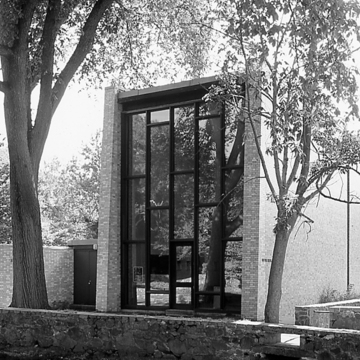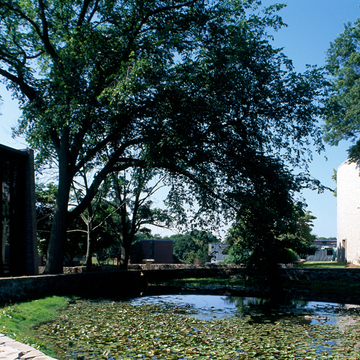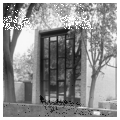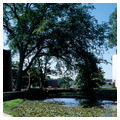On the northern edge of the campus stand the Three Chapels, considered by many to be Brandeis's most influential architectural symbols. They express in their abstract form the Holy Scriptures of Western religion. This American Institute of Architects award-winning concept presents a different abstract shape for each of the three major Western faiths—Jewish, Catholic, and Protestant. Where the shapes of the Catholic and Protestant chapels are suggestive of books, the Jewish Chapel's shape is based on a scroll. Harrison and Abramovitz used a glazed, gray brick that sets the chapels apart from the red brick of most of the campus architecture. The chapels can be reached from the peripheral road or by walking across the Chapel Field.
You are here
Three Chapels
If SAH Archipedia has been useful to you, please consider supporting it.
SAH Archipedia tells the story of the United States through its buildings, landscapes, and cities. This freely available resource empowers the public with authoritative knowledge that deepens their understanding and appreciation of the built environment. But the Society of Architectural Historians, which created SAH Archipedia with University of Virginia Press, needs your support to maintain the high-caliber research, writing, photography, cartography, editing, design, and programming that make SAH Archipedia a trusted online resource available to all who value the history of place, heritage tourism, and learning.














